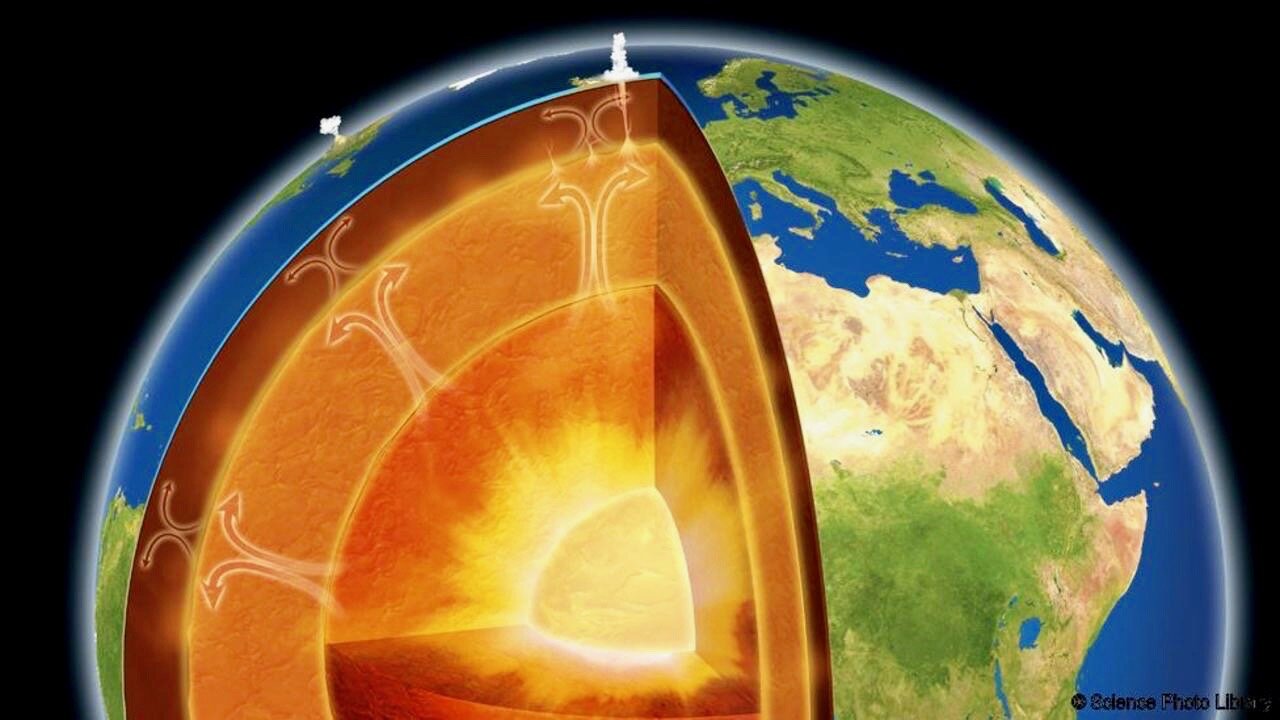Premium Only Content

Great Animation Shows How Deep Humans Dug Into The Earth
Extreme Journey to the center of the Earth - Scientific drilling into the Earth is a way for scientists to probe the Earth's sediments, crust, and upper mantle. In addition to rock samples, drilling technology can unearth samples of connate fluids and of the subsurface biosphere, mostly microbial life, preserved in drilled samples. Most of the technology used for drilling come from advances in the oil and gas industry. Scientific drilling is carried out on land by the International Continental Scientific Drilling Program (ICDP) and at sea by the Integrated Ocean Drilling Program (IODP). Scientific drilling on the continents includes drilling down into solid ground as well as drilling from small boats on lakes. Sampling thick glaciers and ice sheets to obtain ice cores is related but will not be described further here.
Like probes sent into outer space, scientific drilling is a technology used to obtain samples from places that people cannot reach. Human beings have descended as deep as 2,080 m (6,822 ft) in Voronya Cave, the world's deepest known cave, located in the Caucasus mountains of the country of Georgia. Gold miners in South Africa regularly go deeper than 3,400 m, but no human has ever descended to greater depths than this below the Earth's solid surface. As depth increases into the Earth, temperature and pressure rise. Temperatures in the crust increase about 15°C per kilometer, making it impossible for humans to exist at depths greater than several kilometers, even if it was somehow possible to keep shafts open in spite of the tremendous pressure.
Scientific drilling is interdisciplinary and international in scope. Individual scientists cannot generally undertake scientific drilling projects alone. Teamwork between scientists, engineers, and administrators is often required for success in planning and in carrying out a drilling project, analyzing the samples, and interpreting and publishing the results in scientific journals.
Humans have reached the moon and are planning to return samples from Mars, but when it comes to exploring the land deep beneath our feet, we have only scratched the surface of our planet.
This may be about to change with a $1 billion mission to drill 6 km (3.7 miles) beneath the seafloor to reach the Earth's mantle -- a 3000 km-thick layer of slowly deforming rock between the crust and the core which makes up the majority of our planet -- and bring back the first ever fresh samples.
It could help answer some of our biggest questions about the origins and evolution of Earth itself, with almost all of the sea floor and continents that make up the Earth´s surface originating from the mantle.
Geologists involved in the project are already comparing it to the Apollo Moon missions in terms of the value of the samples it could yield.
However, in order to reach those samples, the team of international scientists must first find a way to grind their way through ultra-hard rocks with 10 km-long (6.2 miles) drill pipes -- a technical challenge that one of the project co-leaders Damon Teagle, from the UK's University of Southampton calls, "the most challenging endeavor in the history of Earth science."
'A ship flying in space:' Earth seen through the eyes of an astronaut
Their task will be all the more difficult for being conducted out in the middle of the ocean. It is here that the Earth´s crust is at its thinnest at around 6 km compared to as much as 60 km (37.3 miles) on land.
Drilling all the way to the mantle would also give geologists a look at what they call the Mohorovičić discontinuity, or Moho, for short. Above this mysterious zone, named for the Croatian seismologist who discovered it in 1909, seismic waves travel at around 4.3 miles per second, a rate consistent with those waves traveling through basalt, or cooled lava. Below the Moho, the waves rip along at around 5 miles per second, similar to the rate they travel through a silica-poor type of igneous rock called peridotite. The Moho typically lies between 3 to 6 miles below the ocean floor and anywhere between 12 to 56 miles beneath the continents.
This zone has long been considered the crust-mantle boundary, where material gradually cools and sticks to the overlying crust. But some lab studies suggest it’s possible that the Moho represents the zone where water seeping down from the overlying crust reacts with mantle peridotites to create a type of mineral called serpentine. This possibility is exciting, Dick and MacLeod suggest. The geochemical reactions that generate serpentine also produce hydrogen, which can then react with seawater to produce methane, a source of energy for some types of bacteria. Or, the researchers note, the Moho could be something else entirely unknown to science.
Music: Land of Giants by Dhruva Aliman
Amazon - https://amzn.to/2B9tGa7
https://music.apple.com/us/artist/dhruva-aliman/363563637
https://dhruvaaliman.bandcamp.com/album/road-of-fortunes
http://www.dhruvaaliman.com/
Spotify - https://open.spotify.com/artist/5XiFCr9iBKE6Cupltgnlet
#interesting
#engineering
#earth
-
 LIVE
LIVE
LFA TV
13 hours agoBAN TRANS! | LIVE FROM AMERICA 12.17.24 11am EST
3,879 watching -
 5:46
5:46
China Uncensored
15 hours agoChina Just Lost a Quarter TRILLION Dollars
1.73K3 -
 23:26
23:26
Dave Portnoy
2 hours agoDavey Day Trader Presented by Kraken - December 17, 2024
15.2K8 -
 13:35
13:35
Neil McCoy-Ward
1 hour agoThis Is The CRAZIEST Situation I've Researched All Year...
2.68K1 -
 LIVE
LIVE
Dad Dojo Podcast
2 hours agoEP13: Youth Sports: Specialization vs Versatility
298 watching -
 1:06:44
1:06:44
2 MIKES LIVE
2 hours agoTHE MIKE SCHWARTZ SHOW with DR. MICHAEL J SCHWARTZ 12-17-2024
9.04K -
 36:14
36:14
BonginoReport
3 hours agoAfter Weeks of Cheering on Gun Violence, Left Calls for Gun Control (Ep.106) - 12/17/2024
50.7K103 -
 LIVE
LIVE
Wendy Bell Radio
6 hours agoThe Swamp's Chickens Come Home to Roost
10,180 watching -
 1:18:54
1:18:54
Game On!
10 hours ago $7.58 earnedVikings and Falcons DOMINATE on Monday Night Football!
64.6K1 -
 LIVE
LIVE
The Sufari Hub
9 hours agoHUGE 5 DAY GAMING STREAM | Marvel Rivals & Fortnite and MORE
118 watching